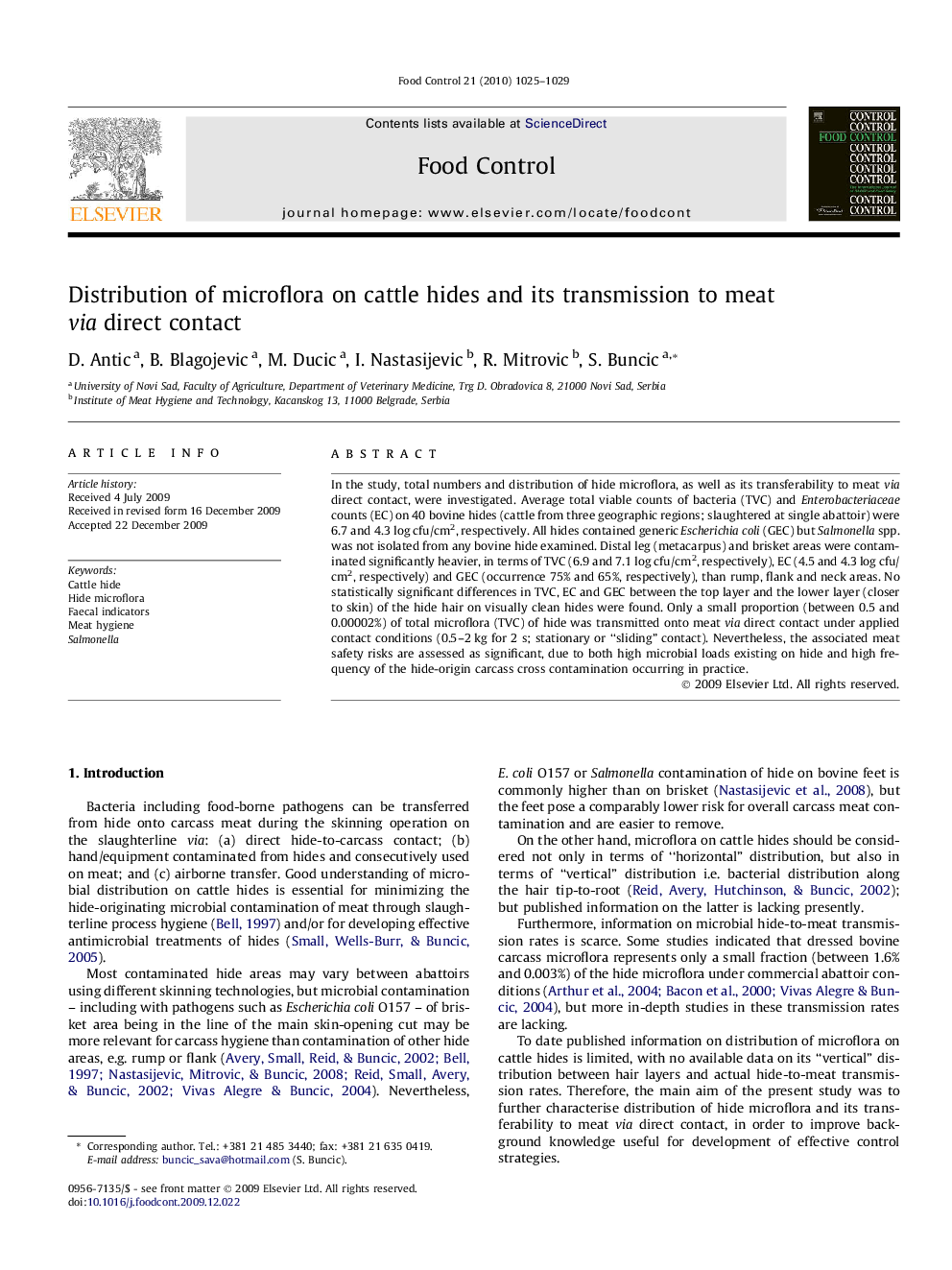| Article ID | Journal | Published Year | Pages | File Type |
|---|---|---|---|---|
| 4559571 | Food Control | 2010 | 5 Pages |
Abstract
In the study, total numbers and distribution of hide microflora, as well as its transferability to meat via direct contact, were investigated. Average total viable counts of bacteria (TVC) and Enterobacteriaceae counts (EC) on 40 bovine hides (cattle from three geographic regions; slaughtered at single abattoir) were 6.7 and 4.3 log cfu/cm2, respectively. All hides contained generic Escherichia coli (GEC) but Salmonella spp. was not isolated from any bovine hide examined. Distal leg (metacarpus) and brisket areas were contaminated significantly heavier, in terms of TVC (6.9 and 7.1 log cfu/cm2, respectively), EC (4.5 and 4.3 log cfu/cm2, respectively) and GEC (occurrence 75% and 65%, respectively), than rump, flank and neck areas. No statistically significant differences in TVC, EC and GEC between the top layer and the lower layer (closer to skin) of the hide hair on visually clean hides were found. Only a small proportion (between 0.5 and 0.00002%) of total microflora (TVC) of hide was transmitted onto meat via direct contact under applied contact conditions (0.5-2 kg for 2 s; stationary or “sliding” contact). Nevertheless, the associated meat safety risks are assessed as significant, due to both high microbial loads existing on hide and high frequency of the hide-origin carcass cross contamination occurring in practice.
Related Topics
Life Sciences
Agricultural and Biological Sciences
Food Science
Authors
D. Antic, B. Blagojevic, M. Ducic, I. Nastasijevic, R. Mitrovic, S. Buncic,
